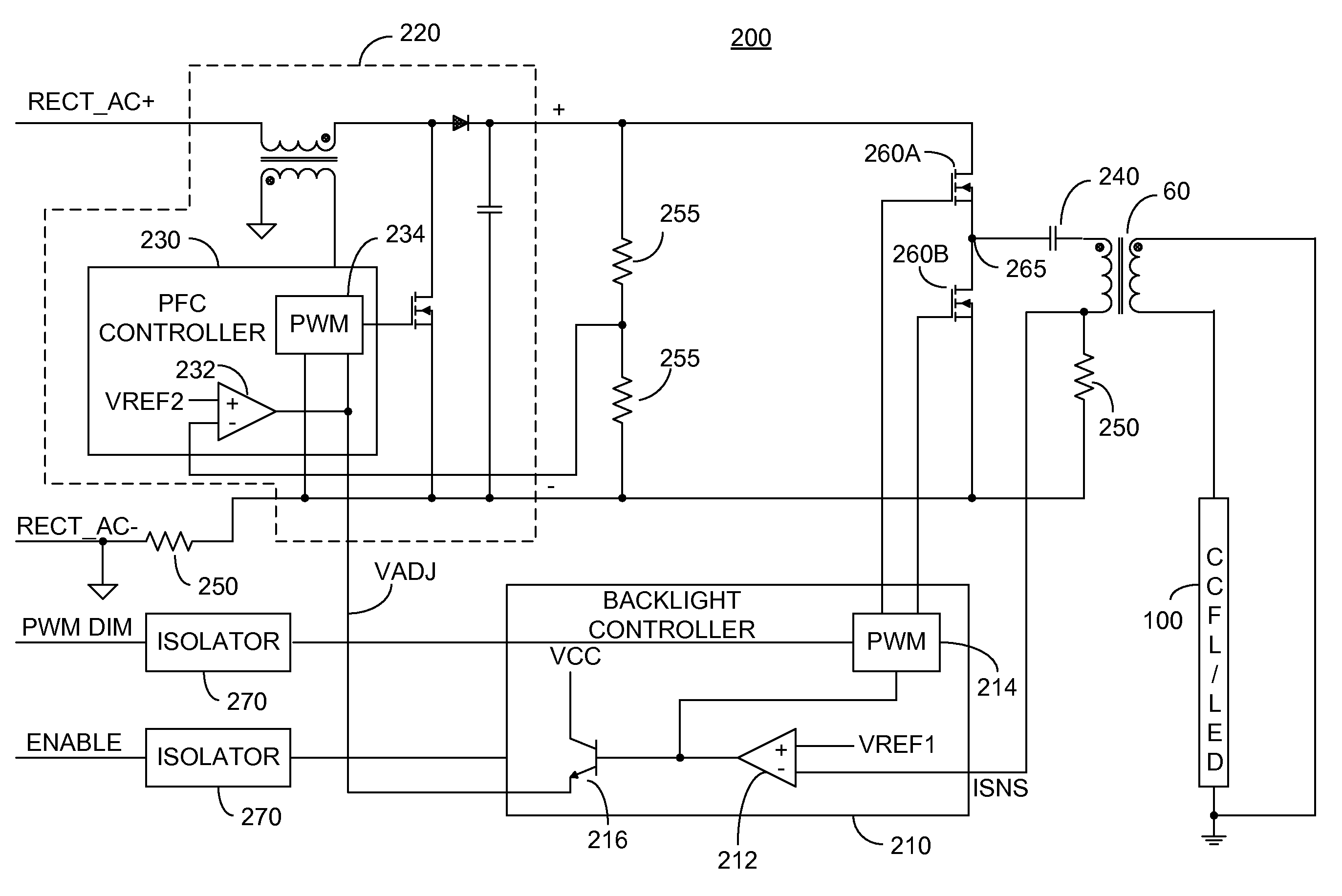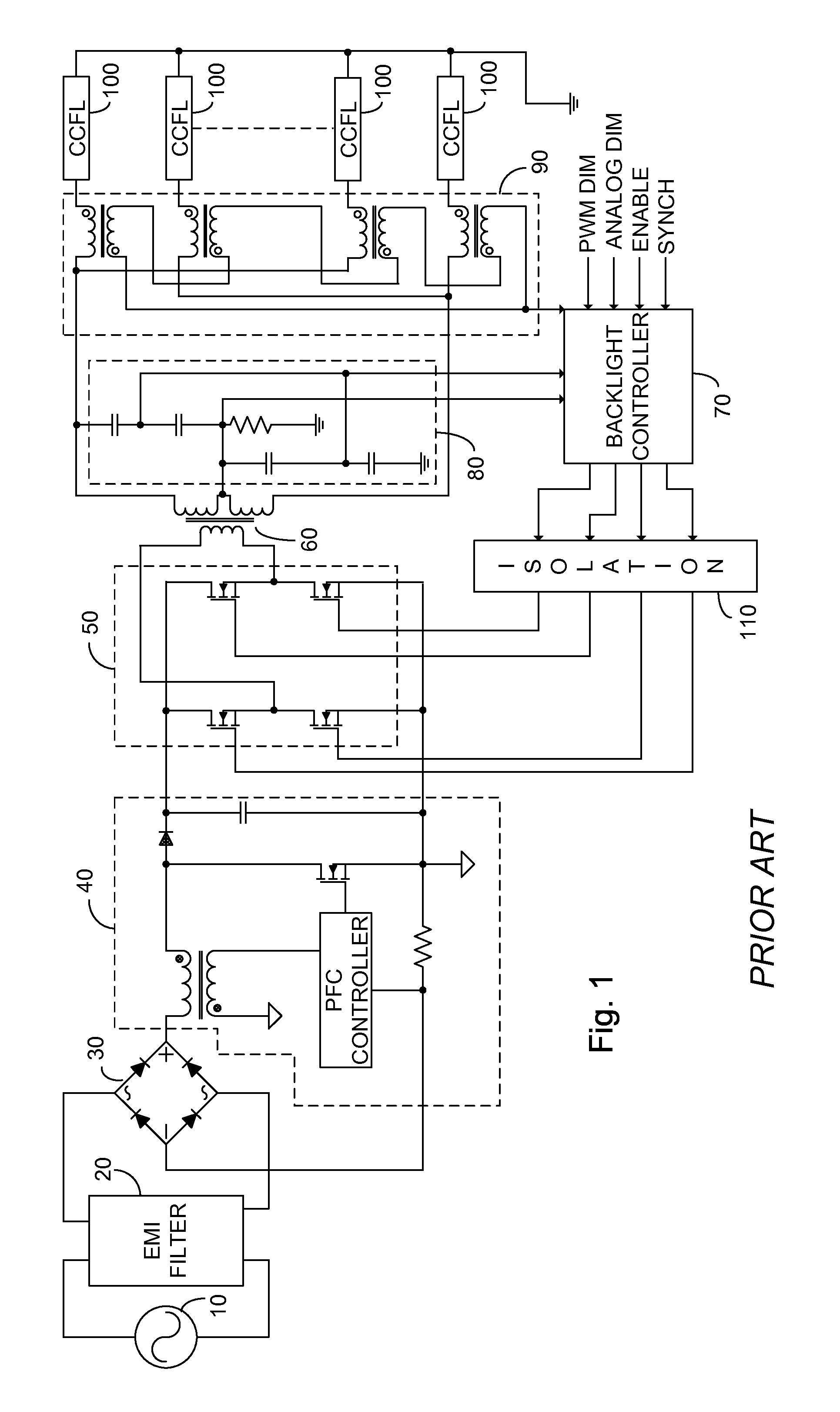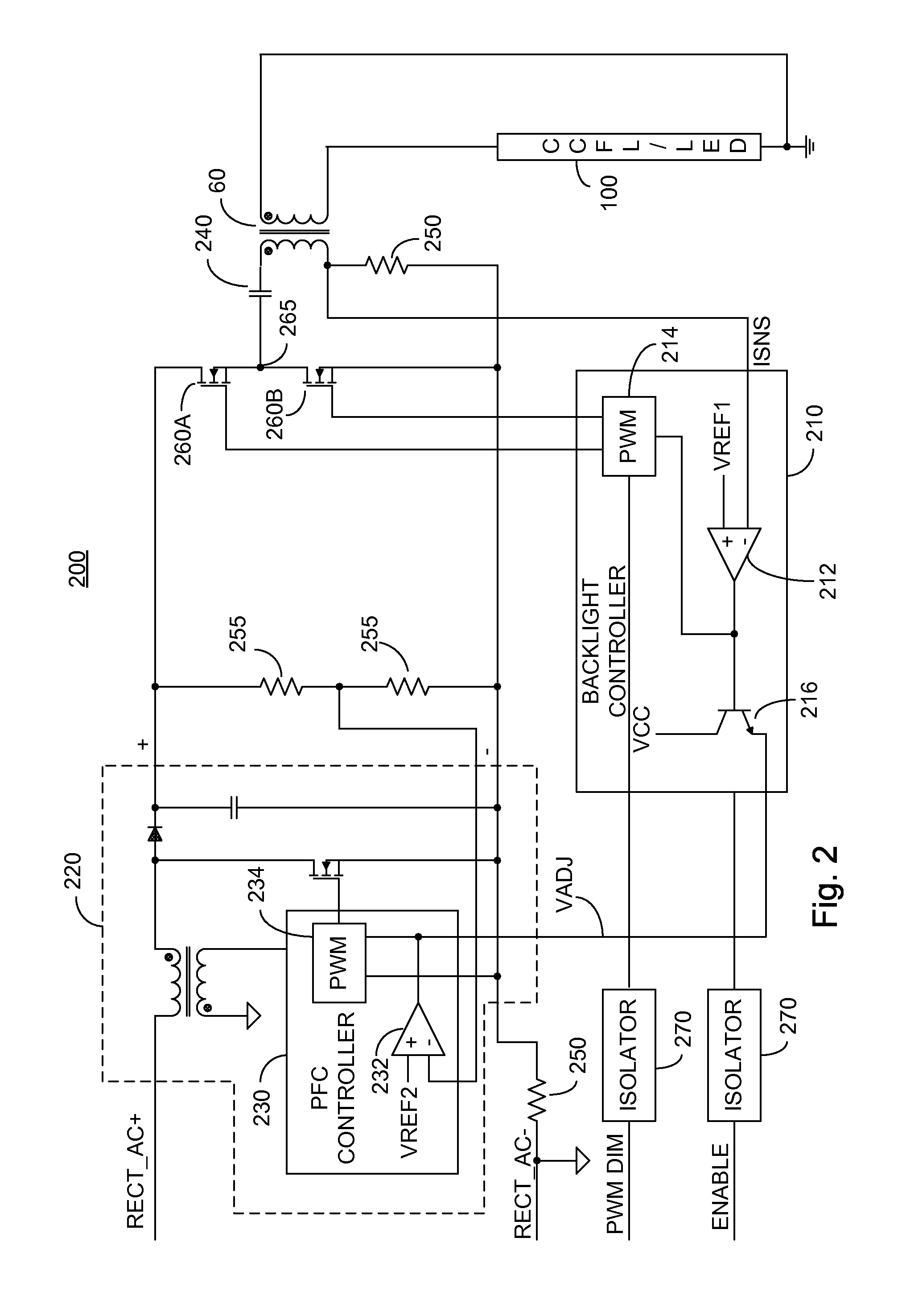Integrated backlight control system
a backlight control and integrated technology, applied in the field of lighting, can solve the problems of high switching loss, high power loss, and high power consumption of backlight system, and achieve the effect of cost saving, low cost, and preferably reduced total cost of the arrangemen
- Summary
- Abstract
- Description
- Claims
- Application Information
AI Technical Summary
Benefits of technology
Problems solved by technology
Method used
Image
Examples
Embodiment Construction
[0032]Before explaining at least one embodiment of the invention in detail, it is to be understood that the invention is not limited in its application to the details of construction and the arrangement of the components set forth in the following description or illustrated in the drawings. The invention is applicable to other embodiments or of being practiced or carried out in various ways. Also, it is to be understood that the phraseology and terminology employed herein is for the purpose of description and should not be regarded as limiting.
[0033]FIG. 2 illustrates a high level schematic diagram of an embodiment of a driving arrangement 200 in which a backlight controller 210 is provided associated with the PFC circuit side of an isolating transformer, wherein current sensing is accomplished in series with the primary winding of the isolation transformer. Driving arrangement 200 comprises: a backlight controller 210 exhibiting an error amplifier 212, a PWM controller 214 and a dr...
PUM
 Login to View More
Login to View More Abstract
Description
Claims
Application Information
 Login to View More
Login to View More - R&D
- Intellectual Property
- Life Sciences
- Materials
- Tech Scout
- Unparalleled Data Quality
- Higher Quality Content
- 60% Fewer Hallucinations
Browse by: Latest US Patents, China's latest patents, Technical Efficacy Thesaurus, Application Domain, Technology Topic, Popular Technical Reports.
© 2025 PatSnap. All rights reserved.Legal|Privacy policy|Modern Slavery Act Transparency Statement|Sitemap|About US| Contact US: help@patsnap.com



